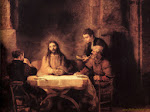Modern Science is based on the scientific method. Basically hypothesis are tested in experime nts. Observations of the results are recorded and then compared with the hypothesis. The results and conclusions have to be repeatable. In other words, the same experiment should return the same results and conclusions by any other scientist conducting the same experiment any where and any time, as long as all the other conditions are the same.
nts. Observations of the results are recorded and then compared with the hypothesis. The results and conclusions have to be repeatable. In other words, the same experiment should return the same results and conclusions by any other scientist conducting the same experiment any where and any time, as long as all the other conditions are the same.
However, the scientific method has to be seriously questioned under the many worlds theory with parallel universes - which I discussed in my November 13 post. This is because you could have one result in one universe, and an entirely different result in another universe. This is similar to the suicide scenario theorized among scientists who explain parallel universes. In one universe, the person with the gun lives, while in another universe, he commits suicide. This can be translated into many other situations, including whether a couple goes out and gets married, etc.
This theoretical possibility means no scientist could rely on their observations of the results of an experiment, because in a parallel universe, the result could be entirely contradictory. The theoretical ramification could be the complete collapse of modern science.
This all results from the quandary in quantum mechanics, of no one being sure of where the particles actually are in a predictable manner. It creates a great deal of uncertainty. Many scientists deeply immersed in quantum mechanics say that all we can do is have a probable result to scientific experiments, and a probability of what might happen in the future under the same situation
which I discussed in my November 13 post. This is because you could have one result in one universe, and an entirely different result in another universe. This is similar to the suicide scenario theorized among scientists who explain parallel universes. In one universe, the person with the gun lives, while in another universe, he commits suicide. This can be translated into many other situations, including whether a couple goes out and gets married, etc.
This theoretical possibility means no scientist could rely on their observations of the results of an experiment, because in a parallel universe, the result could be entirely contradictory. The theoretical ramification could be the complete collapse of modern science.
This all results from the quandary in quantum mechanics, of no one being sure of where the particles actually are in a predictable manner. It creates a great deal of uncertainty. Many scientists deeply immersed in quantum mechanics say that all we can do is have a probable result to scientific experiments, and a probability of what might happen in the future under the same situation
This is best illustrated in a thought experiment by Erwin Schrodinger in a thought experiment known as "Schrödinger's cat" It goes like this: A cat is penned up in a steel chamber along with a radioactive  substance such as uranium, a Geiger counter attached to a quick-release hammer, and a flask of poison gas, hydrocyanic acid. At the heart of it all is a quantum event. Every now and then, completely randomly, there's a chance of a uranium atom decaying and emitting radiation. This radiation is enough to trigger the counter that sets off the hammer that breaks the vial that poisons the cat. But if none of the uranium atoms decay over the duration of the experiment, the cat will live. According to the Copenhagen Interpretation, until the experiment is observed by peering inside, the entire contents of the box exist in two possible states. Each uranium atom both has and has not decayed. And still further, the poisonous gas has both killed and not killed the cat. And this is the paradox: a single cat that is both dead and alive at the same time.
substance such as uranium, a Geiger counter attached to a quick-release hammer, and a flask of poison gas, hydrocyanic acid. At the heart of it all is a quantum event. Every now and then, completely randomly, there's a chance of a uranium atom decaying and emitting radiation. This radiation is enough to trigger the counter that sets off the hammer that breaks the vial that poisons the cat. But if none of the uranium atoms decay over the duration of the experiment, the cat will live. According to the Copenhagen Interpretation, until the experiment is observed by peering inside, the entire contents of the box exist in two possible states. Each uranium atom both has and has not decayed. And still further, the poisonous gas has both killed and not killed the cat. And this is the paradox: a single cat that is both dead and alive at the same time.
This simple thought experiment showed the contradictions in quantum mechanics that led Everet to his many worlds theory, where the cat is alive in one universe - and dead in another. However, whether in the the many worlds universe, or the quantum mechanics world, uncertainty enters, and the scientific method suffers, and leaves modern science weakened. This leaves science vulnerable to the whims or the politics of the ruling elite to manipulate to obtain their goals, of whatever color, in an easier fashion because of the respect usually carried with modern science.
In contrast, Chistrianity gives a firm foundation to modern science which I hope to discuss in the next posting or so.
